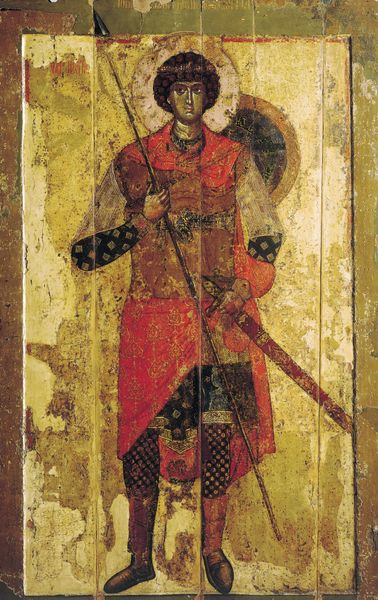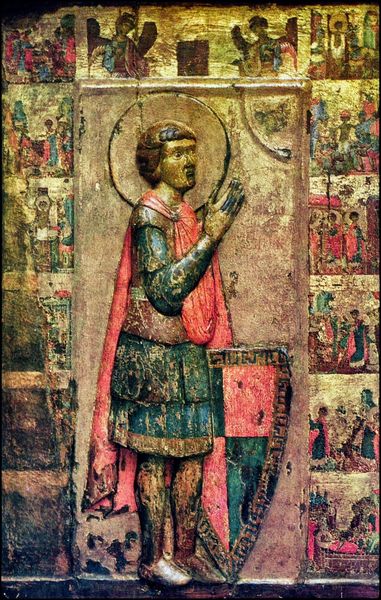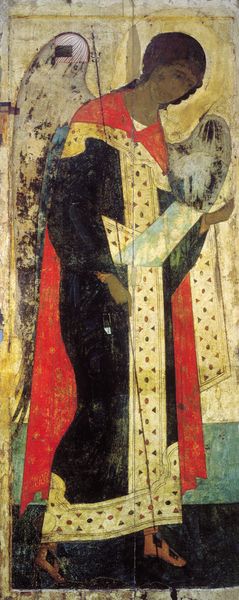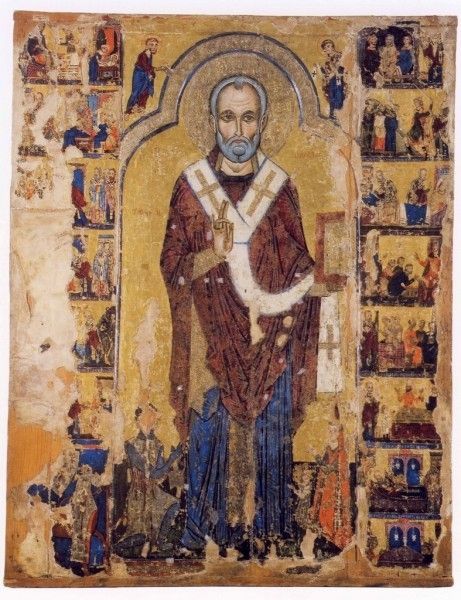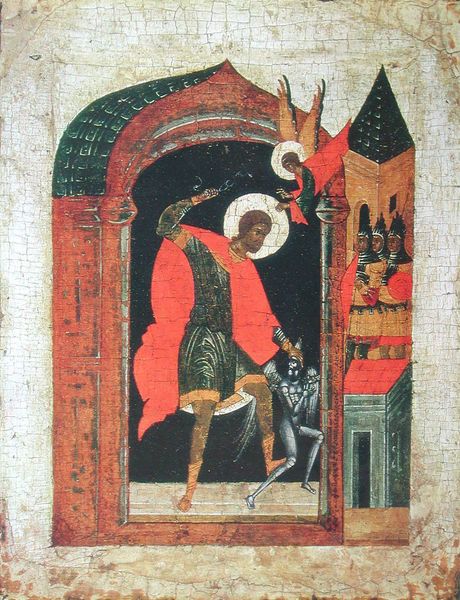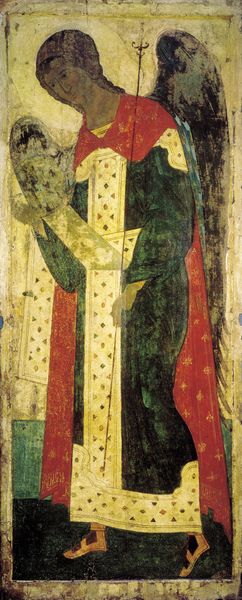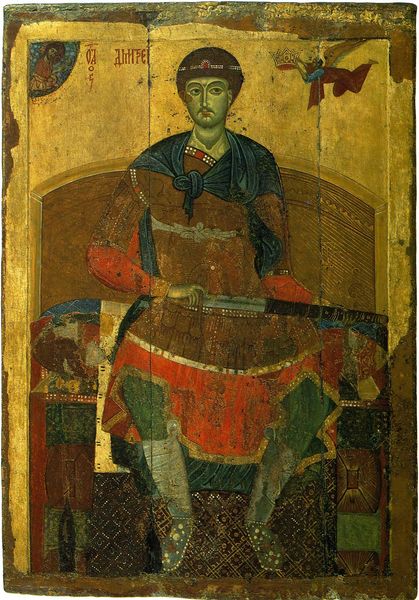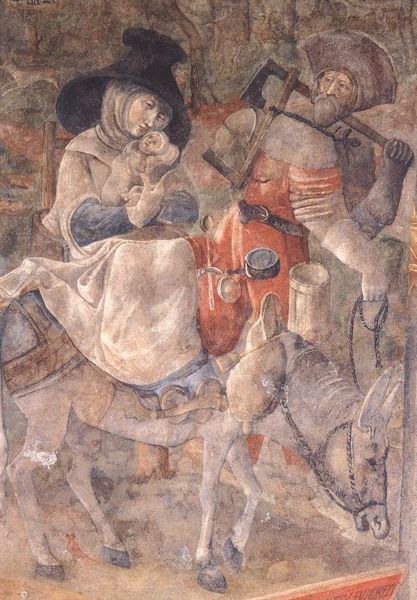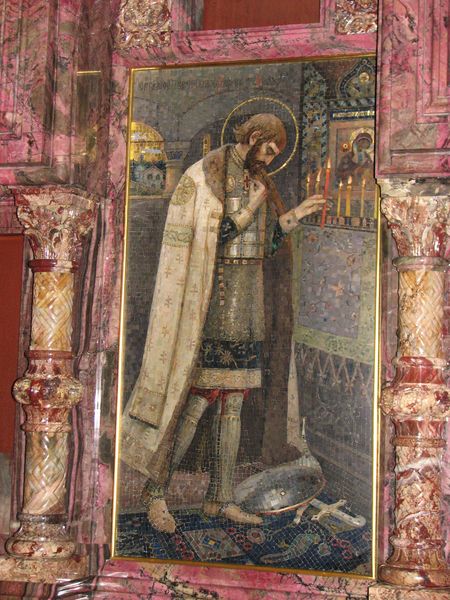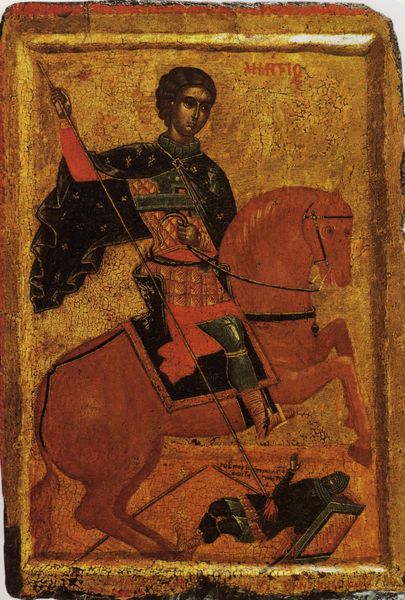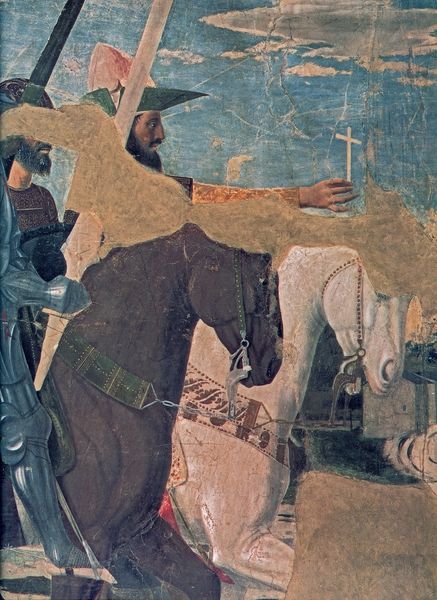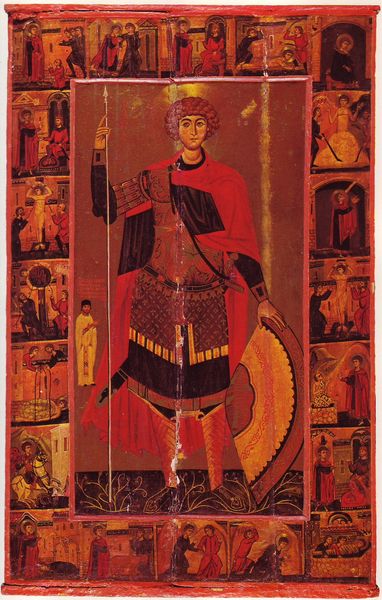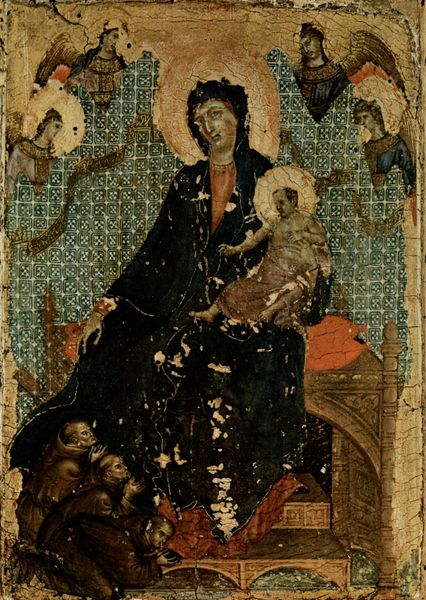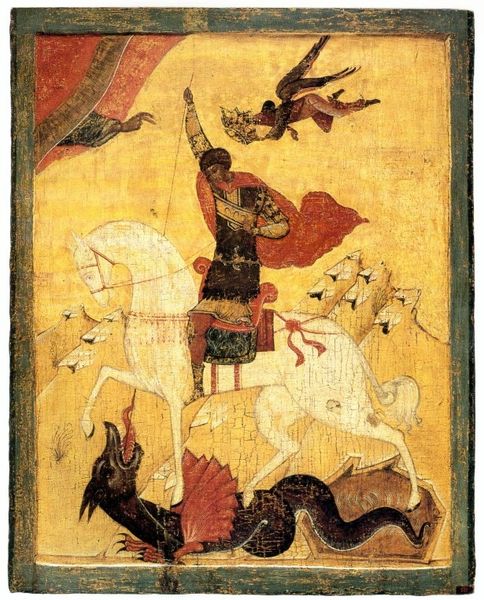
painting, oil-paint
#
byzantine-art
#
medieval
#
painting
#
oil-paint
#
painted
#
figuration
#
oil painting
#
history-painting
Copyright: Orthodox Icons,Fair Use
Curator: The Orthodox icon here, titled "Saint Nikita slaying the demon," was painted around 1800 using oil paints, rendering a medieval subject in a later technique. My immediate impression is the dynamism despite the static quality inherent in icons. Editor: Yes, and the textural richness really arrests me—that aged paint, the visible brushwork adding a physical presence, doesn't it? It emphasizes the inherent flatness against any illusions of depth. Curator: For me, the drama of the composition hinges on Saint Nikita’s victory over evil, as personified in the subjugated demon he is shown gripping. Saint Nikita, revered for his military prowess and unwavering faith, emerges as a potent symbol of the triumph of good over malevolence, a vital theme in Orthodox iconography. Editor: Absolutely. But the muted palette works almost against that victorious theme. The reds and grays, while conveying a traditional richness, are noticeably desaturated, giving the entire scene a sort of melancholic undercurrent, almost wearying. I am reminded of certain themes in Tarkovsky. Curator: I see what you mean about the desaturation contributing to that mood. This could signal a reflection on the constant spiritual battle everyone faces, rather than merely celebrating one saint's victory. Consider also the placement of architectural features in the backdrop: These motifs often denote the heavenly realm, signifying the divine support lent to Nikita's earthly struggles. Editor: An interesting perspective. But does that architectural staging really bolster the sense of sacredness, or does it highlight the artificial construction, calling our attention back to the constructed nature of the image itself? Note the formal device of how the diagonal lines lead towards his lifted hand, accentuating the Saint’s moment of triumphant control? Curator: That control is exactly the symbolic nexus. Saint Nikita’s firm grasp on the demon serves as a reassuring emblem, an example to Orthodox Christians of overcoming adversity through faith. It is the constant remembrance of historical examples that guides believers in contemporary life. Editor: Precisely. Seeing the careful arrangement of colour and shape as conveyors of specific meanings shifts my interpretation from solely appreciating aesthetic qualities to acknowledging a multi-layered, constructed cultural and symbolic order. Curator: Indeed. When encountering a cultural relic like this, it enriches the appreciation when one perceives how aesthetic techniques shape narrative intention across diverse belief systems. Editor: Absolutely. Examining that dialogue enriches how one interprets similar imagery through time.
Comments
No comments
Be the first to comment and join the conversation on the ultimate creative platform.
